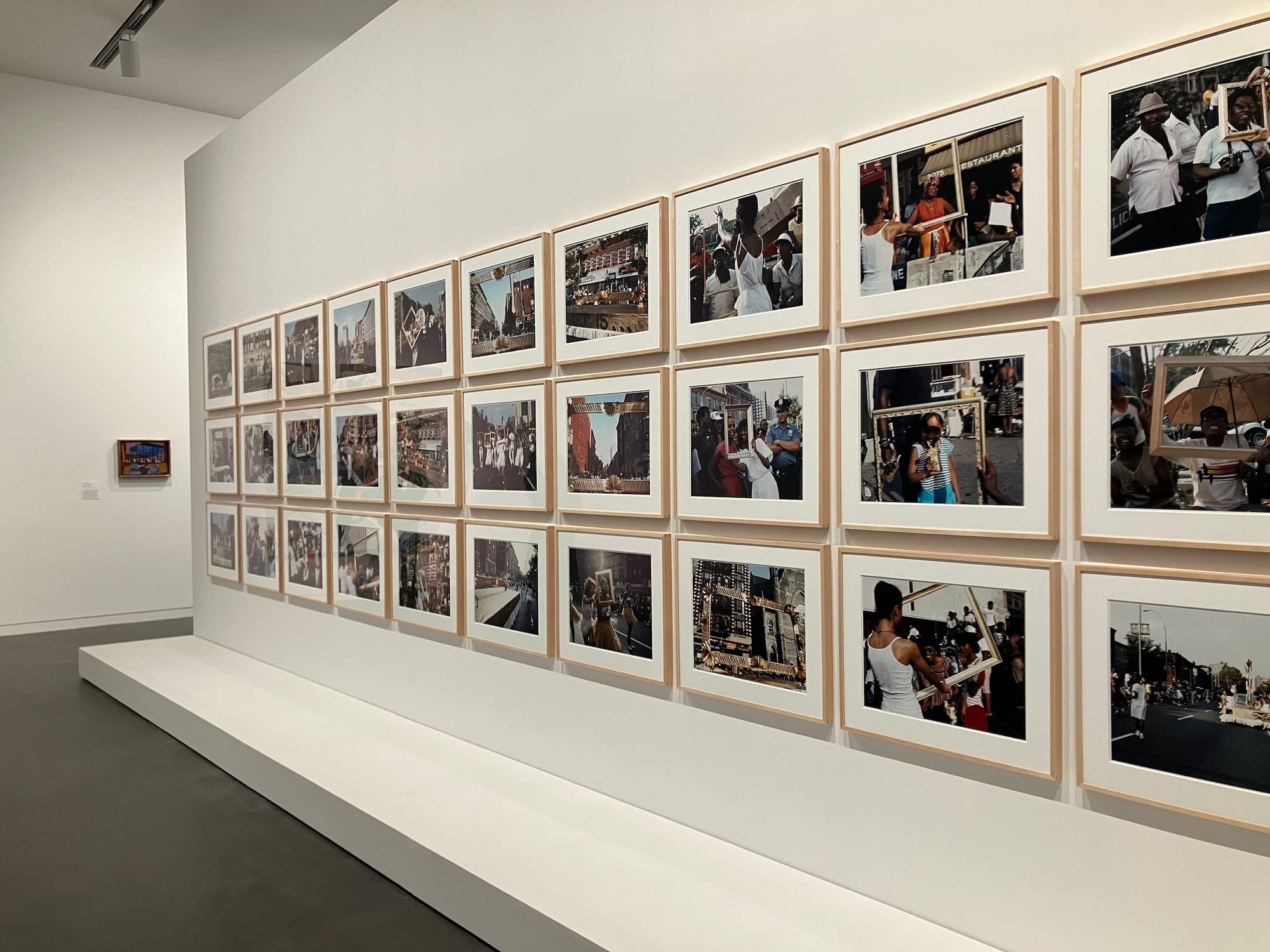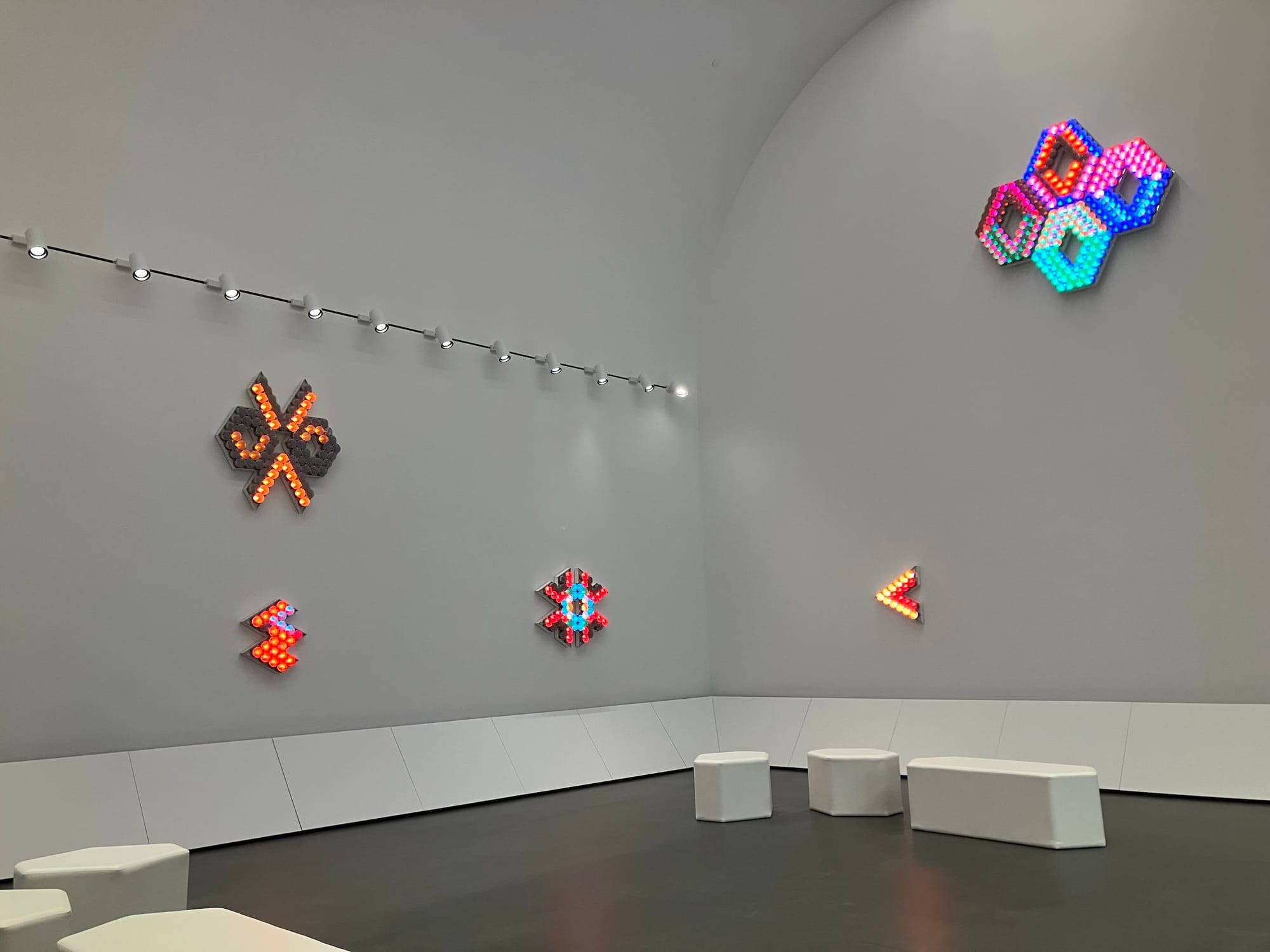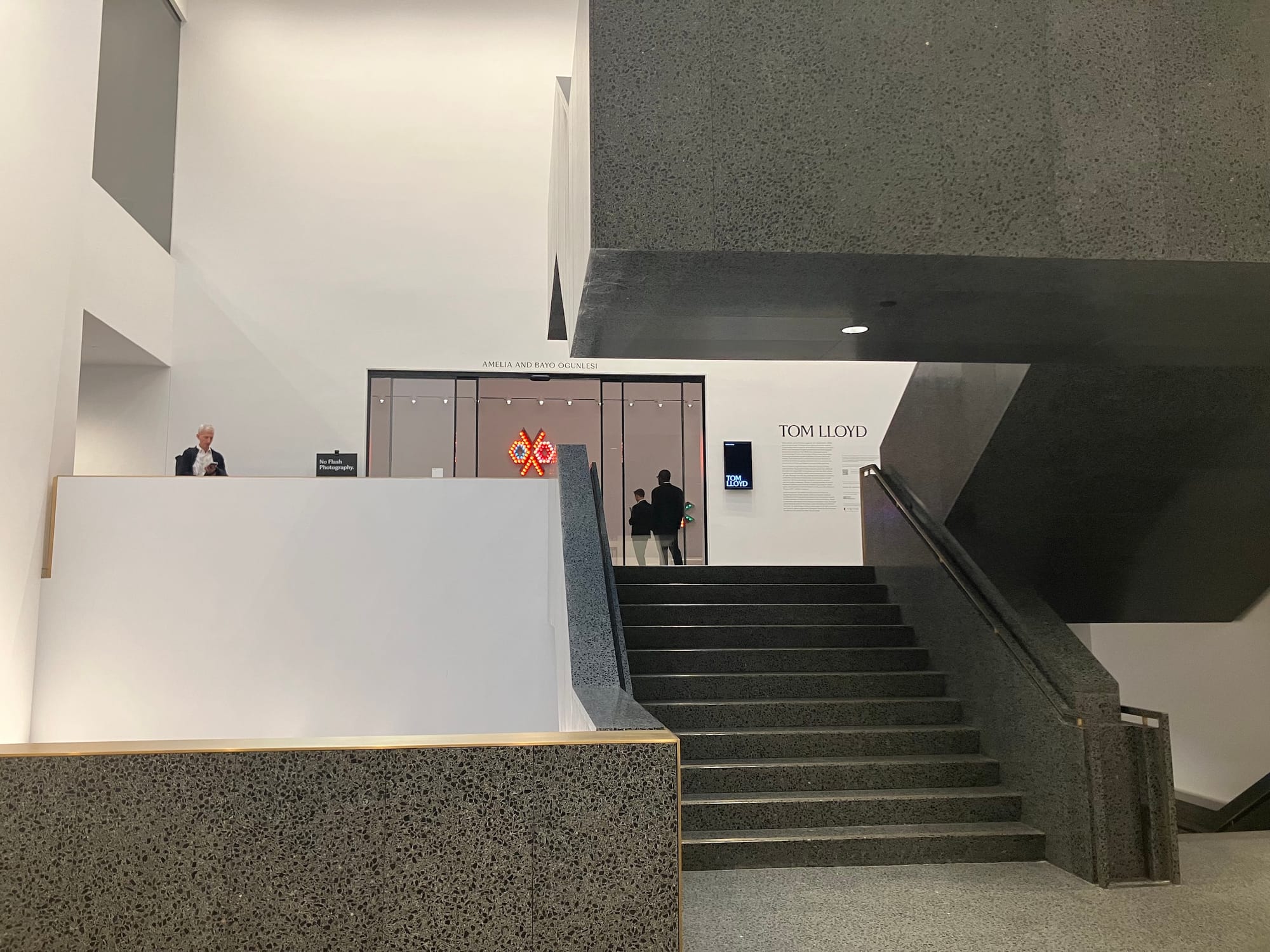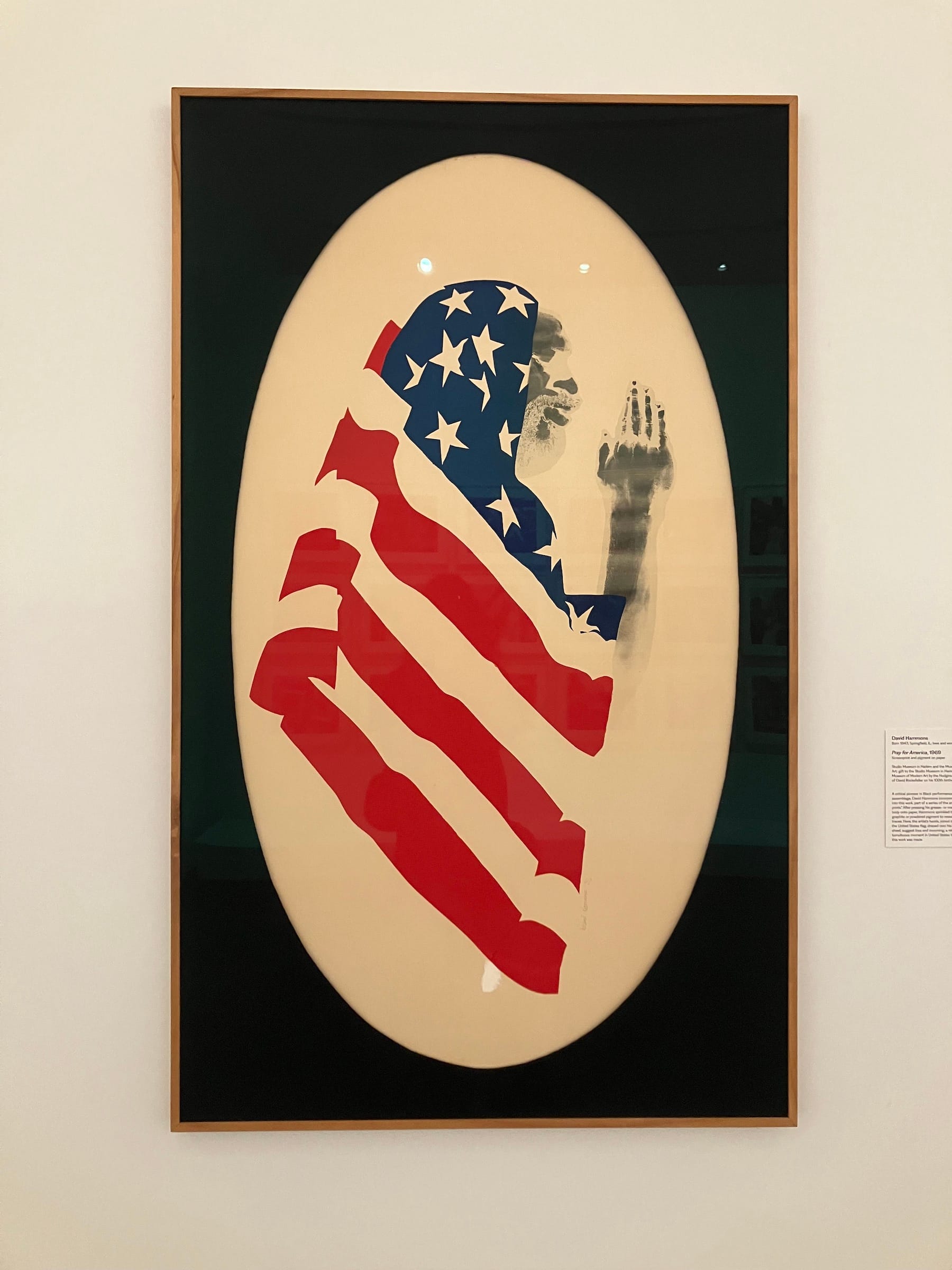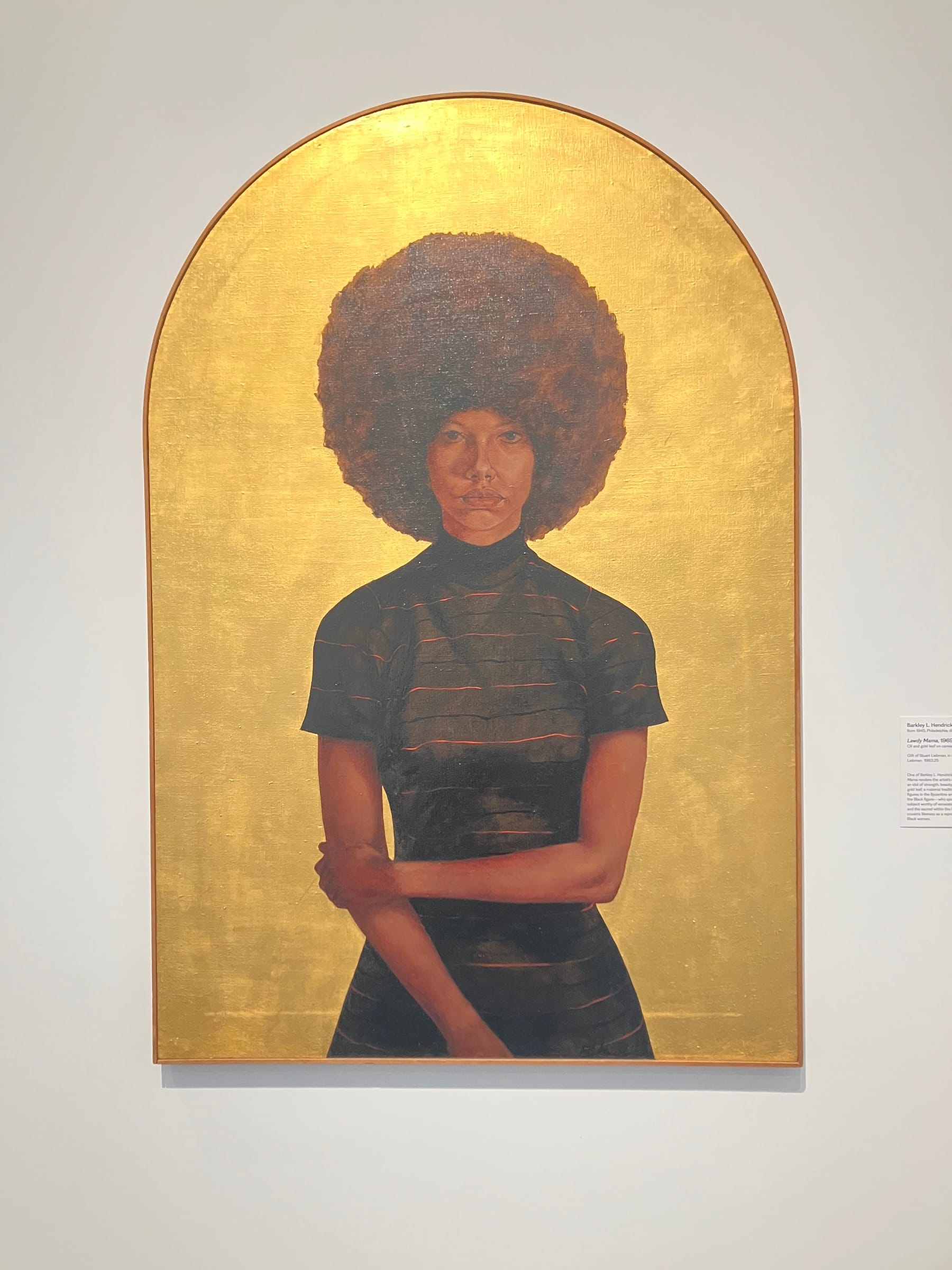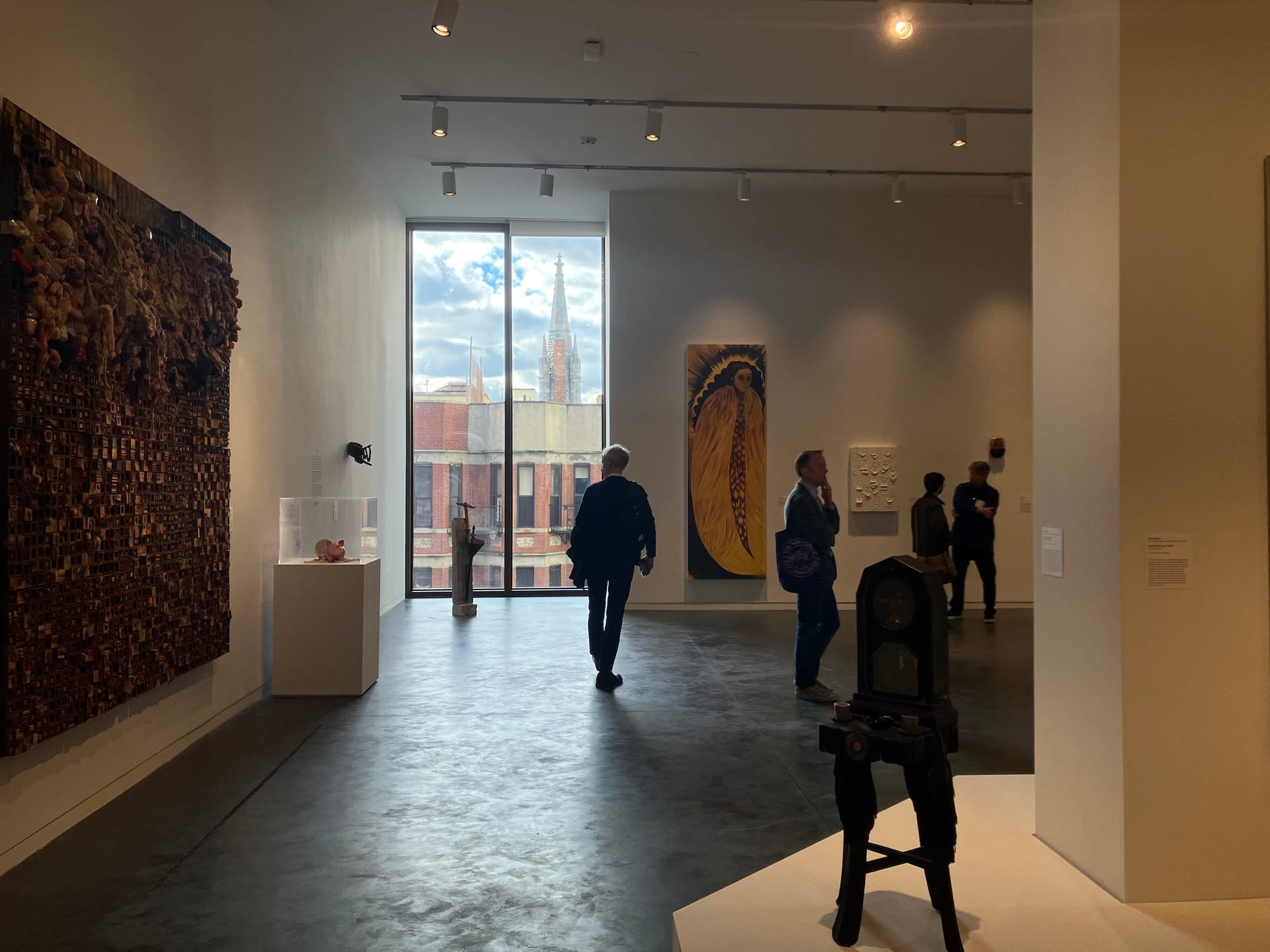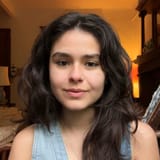A Look Inside the Studio Museum’s New Home
After a seven-year closure, the beloved Harlem institution is opening its new building to the public on November 15.
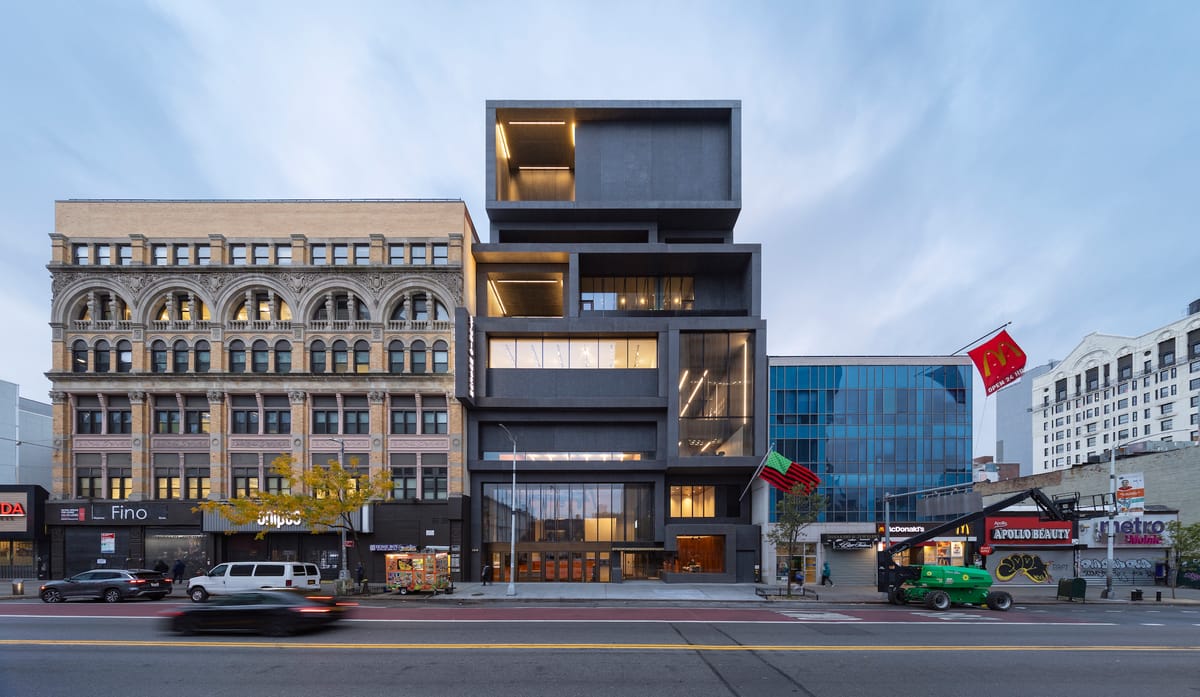
The Studio Museum in Harlem has a new, stunning home.
The 57-year-old New York institution, dedicated to artists of African descent, inaugurated its new building in a press preview today, November 6, ahead of its grand public reopening next Saturday.
Founded by a group of artists and activists, the museum closed its 125th Street location in 2018 to undergo construction of a new building, the first specifically created for the arts institution. The Studio Museum originally opened at a site on Fifth Avenue before moving to its current home on 125th Street and Adam Clayton Powell Jr. Boulevard in the 1980s, the former New York Bank of Savings building. The striking 82,000-square-foot (~7,618-square-meter) new building at the same site was designed by Adjaye Associates with Cooper Robertson. The former is the firm of architect David Adjaye, who was accused of sexual misconduct in 2023 and stepped back from the Studio Museum project shortly thereafter. He has denied those allegations.

"I have truly missed having our physical space," Director and Chief Curator Thelma Golden told Hyperallergic. "In the years we've been closed, our visitors, friends, members, and artists have made it known how much they miss us; everywhere I go."
The museum is debuting a series of inaugural exhibitions, including Tom Lloyd, a one-gallery career survey of the artist-activist’s flashing light sculptures. Works from the museum's approximately 9,000-item collection span three galleries as part of the exhibition From Now: A Collection in Context, which will feature a rotating display.
Though the construction was delayed in part due to the COVID-19 pandemic, Studio Museum Curator Connie Choi told Hyperallergic that the extended timeline gave the institution a chance to look deeper within itself.

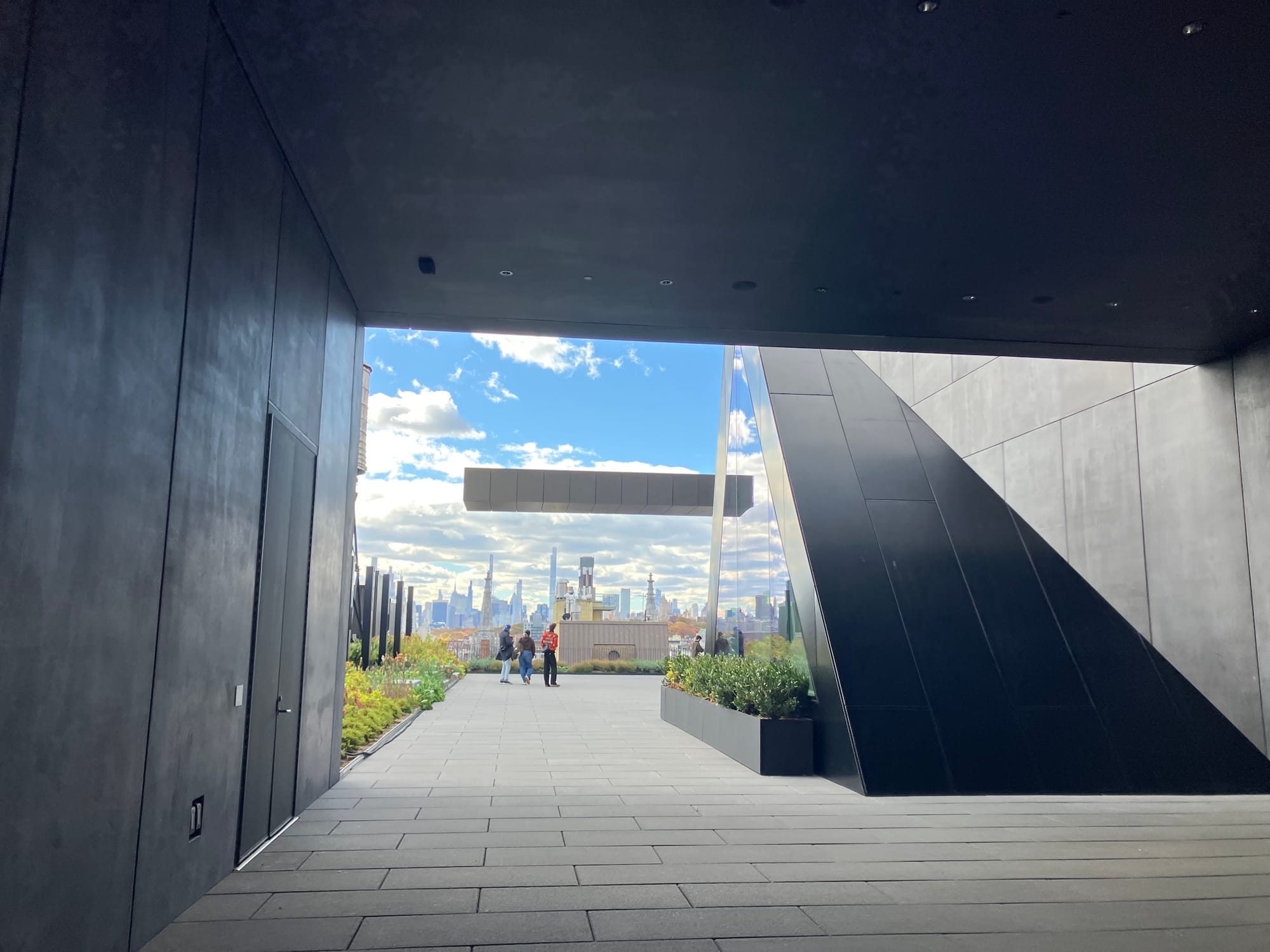
"It allowed us the opportunity to do a deep dive into understanding our collection holdings, to do research, conservation, and framing," Choi said. "We've also done a deep dive into our institutional history in a way that we haven't been able to do before."
"We thought very hard about how to be present while closed," Golden added. During its seven-year closure, the institution launched several collaborations, including the traveling exhibition Black Refractions: Highlights from The Studio Museum. Many of those programs, Golden said, were interrupted by COVID-19.
Choi said she’s most excited about the Lloyd survey, noting that he was the first artist to participate in the museum's studio program.
"It's a space of contemplation, even as the works themselves are blinking and exciting," Choi said. "We are hoping that people can slow down; they are coming off of 125th street, which is the busiest street in Harlem, into a space that allows moment rest and respite and contemplation of artwork."
